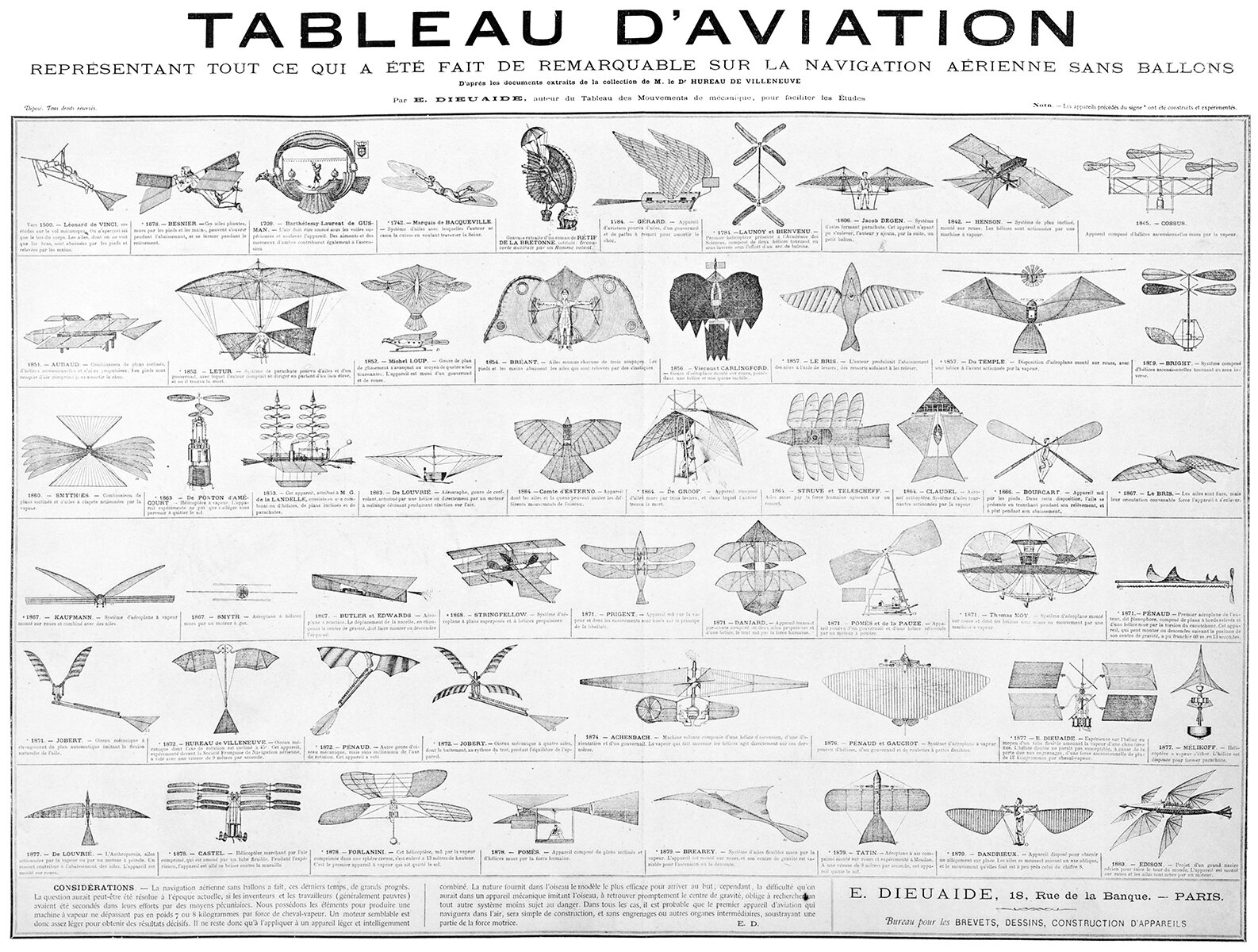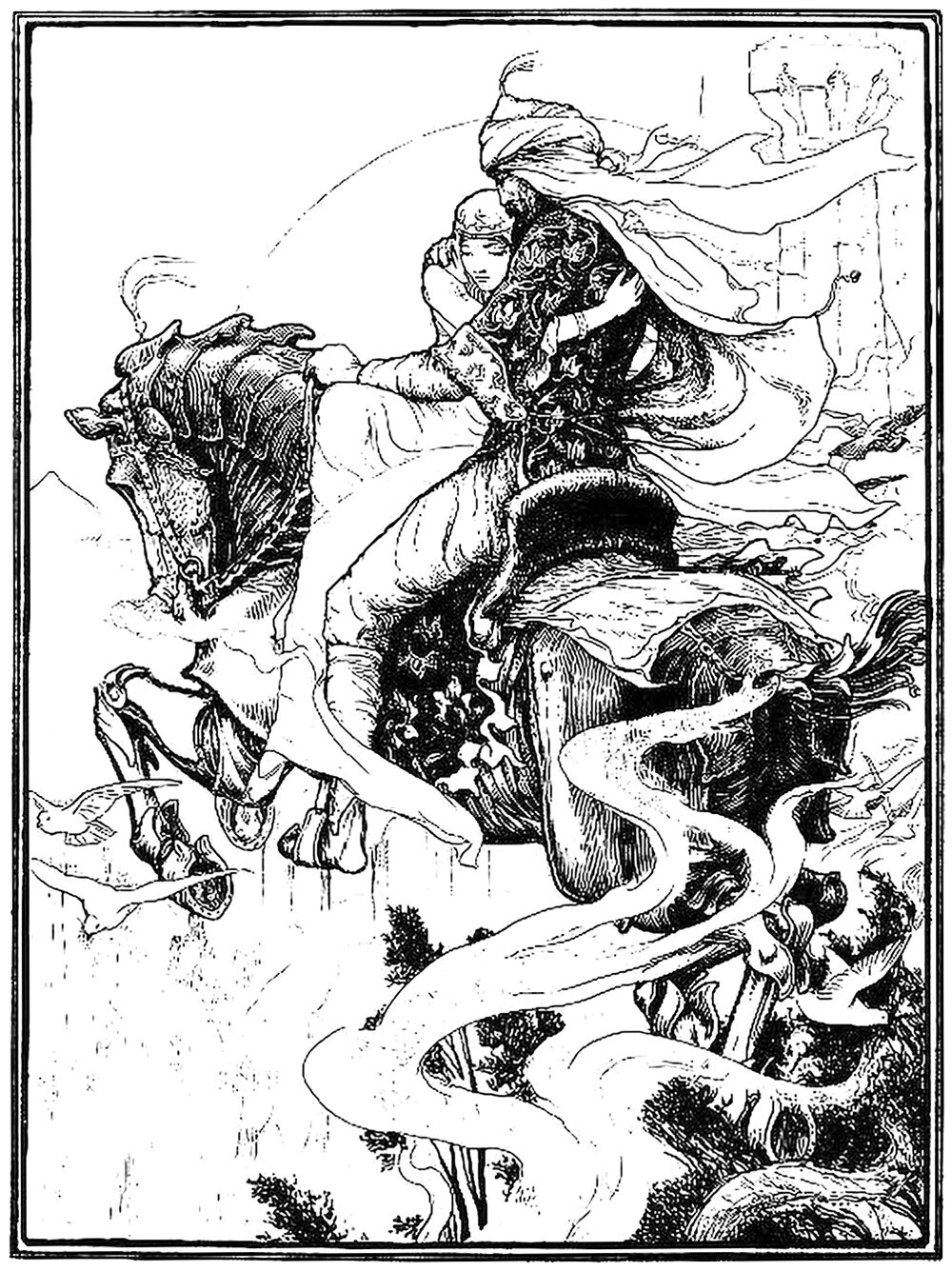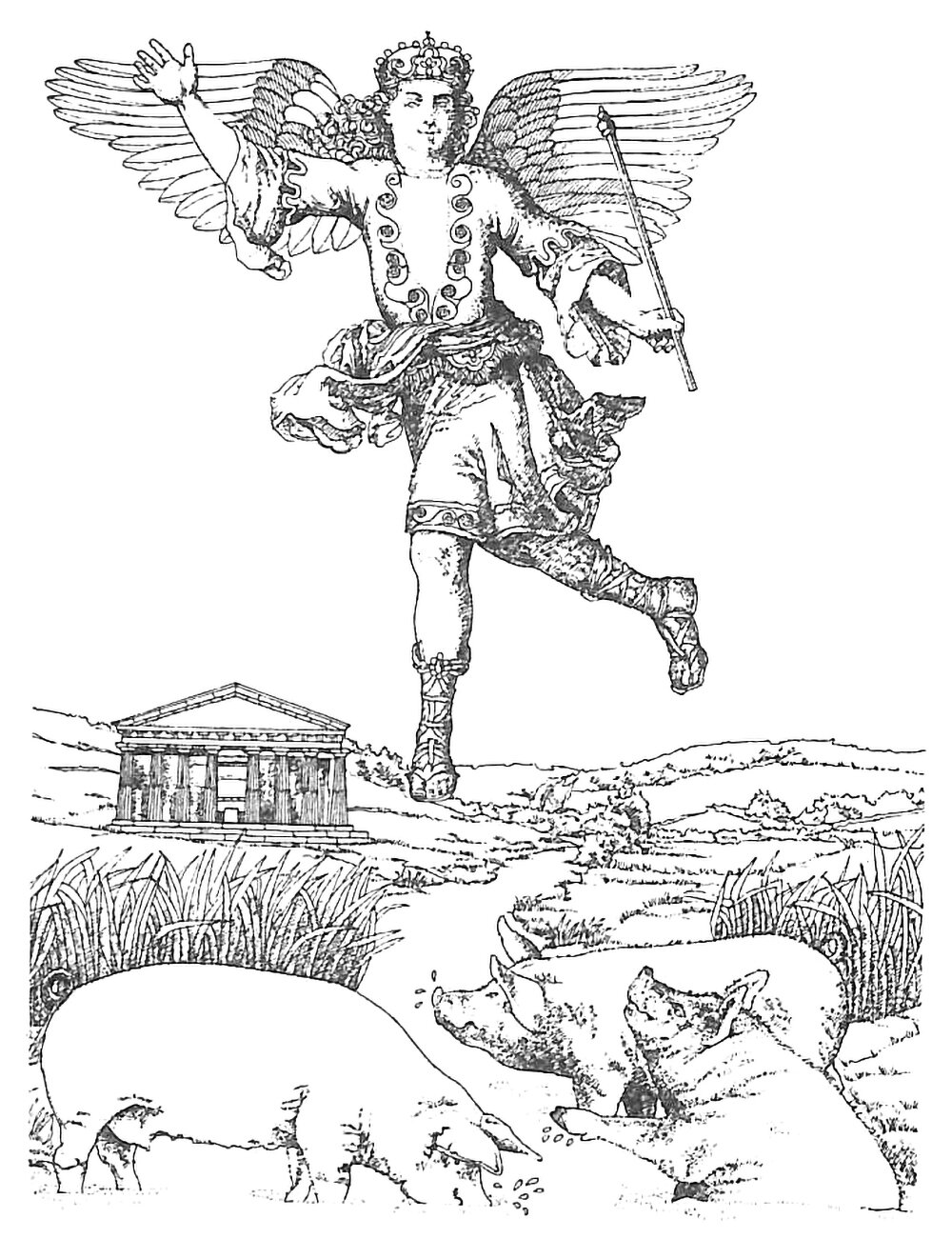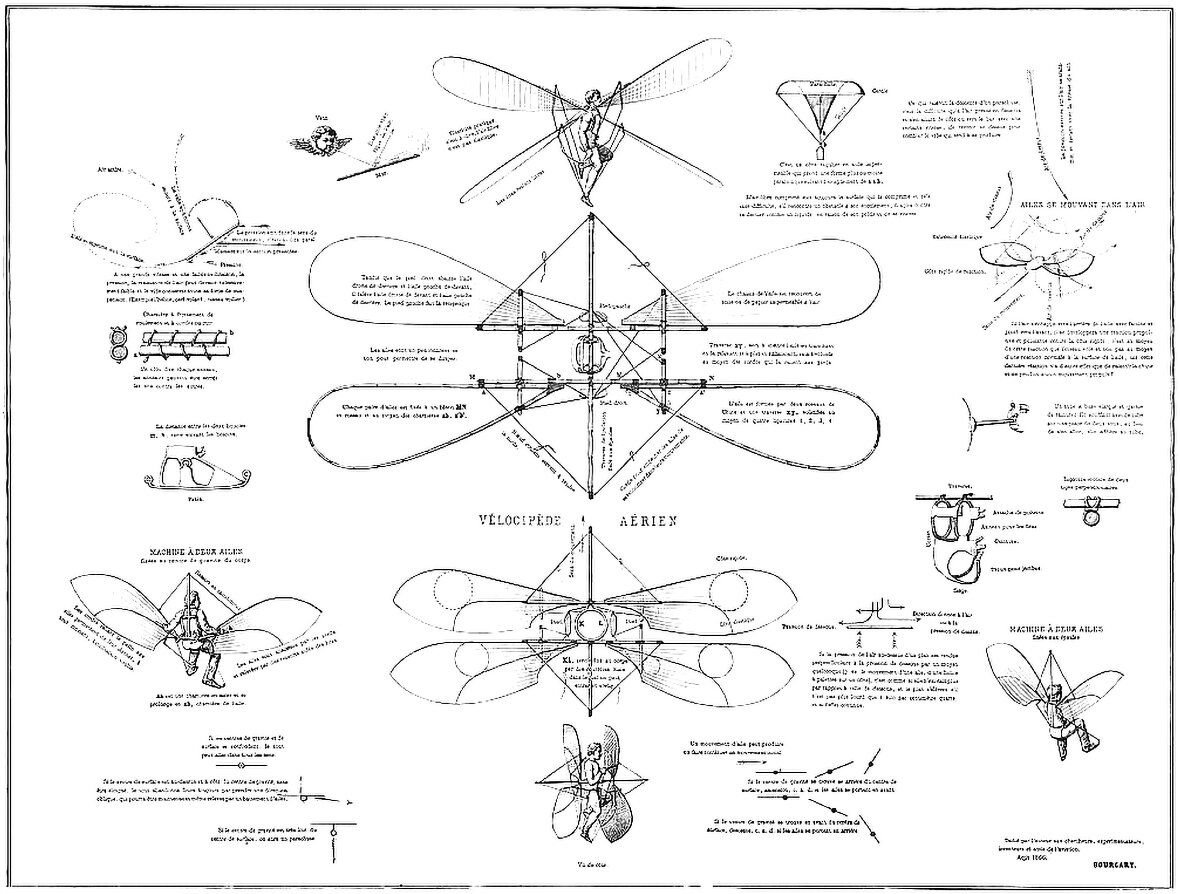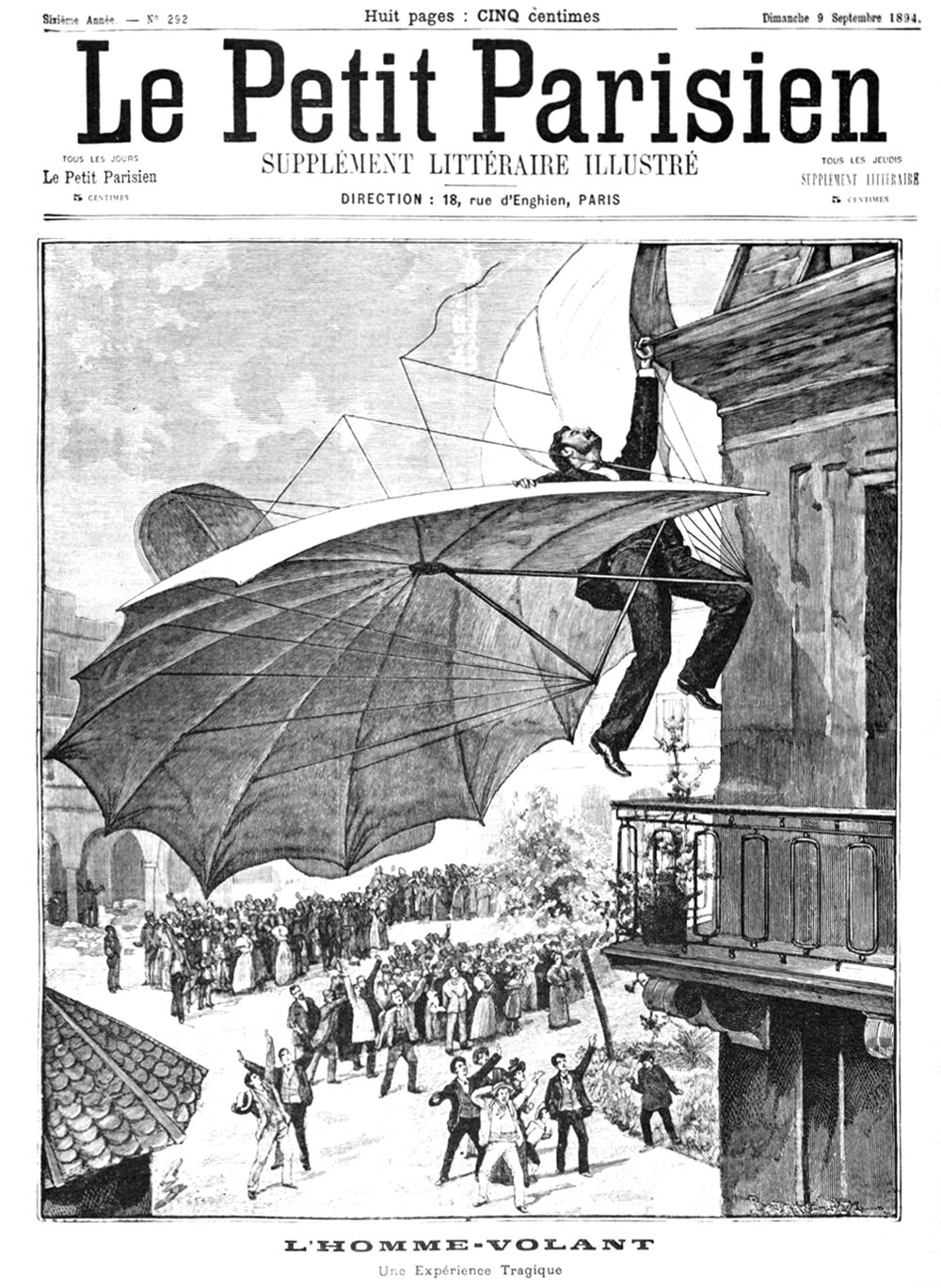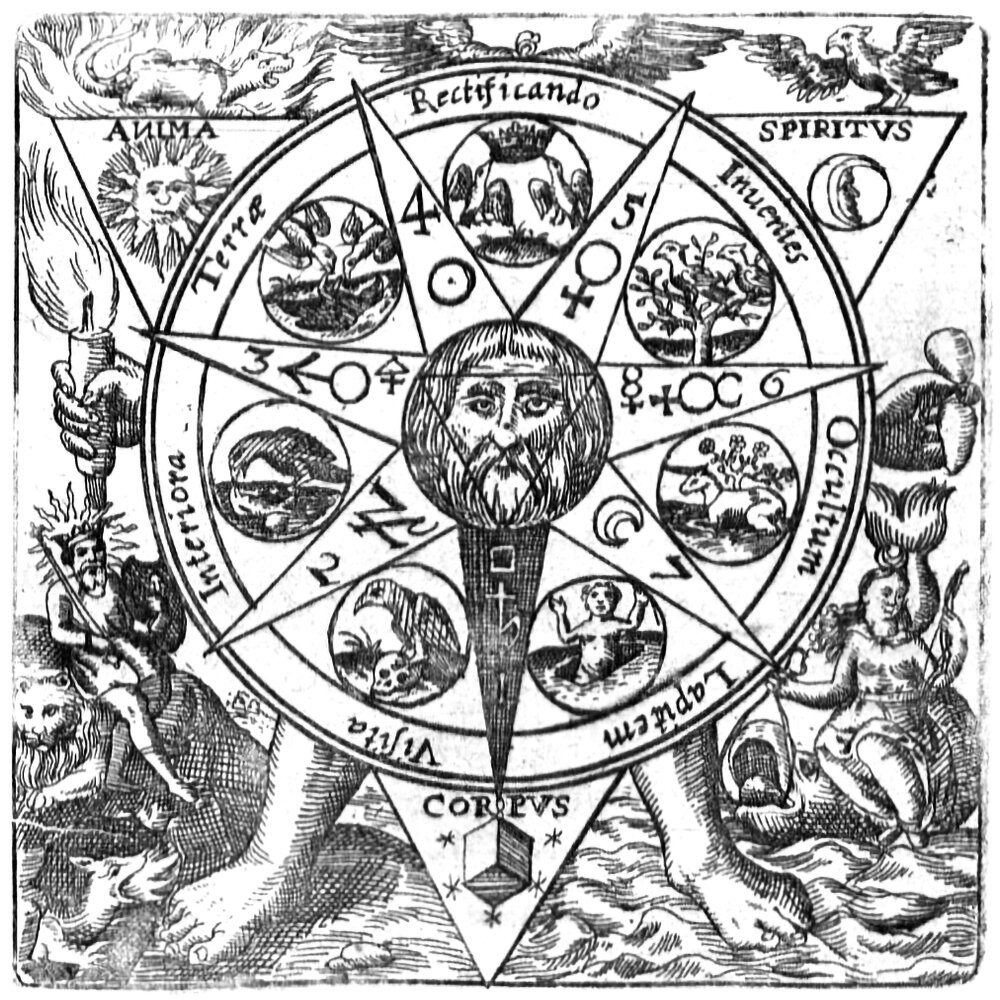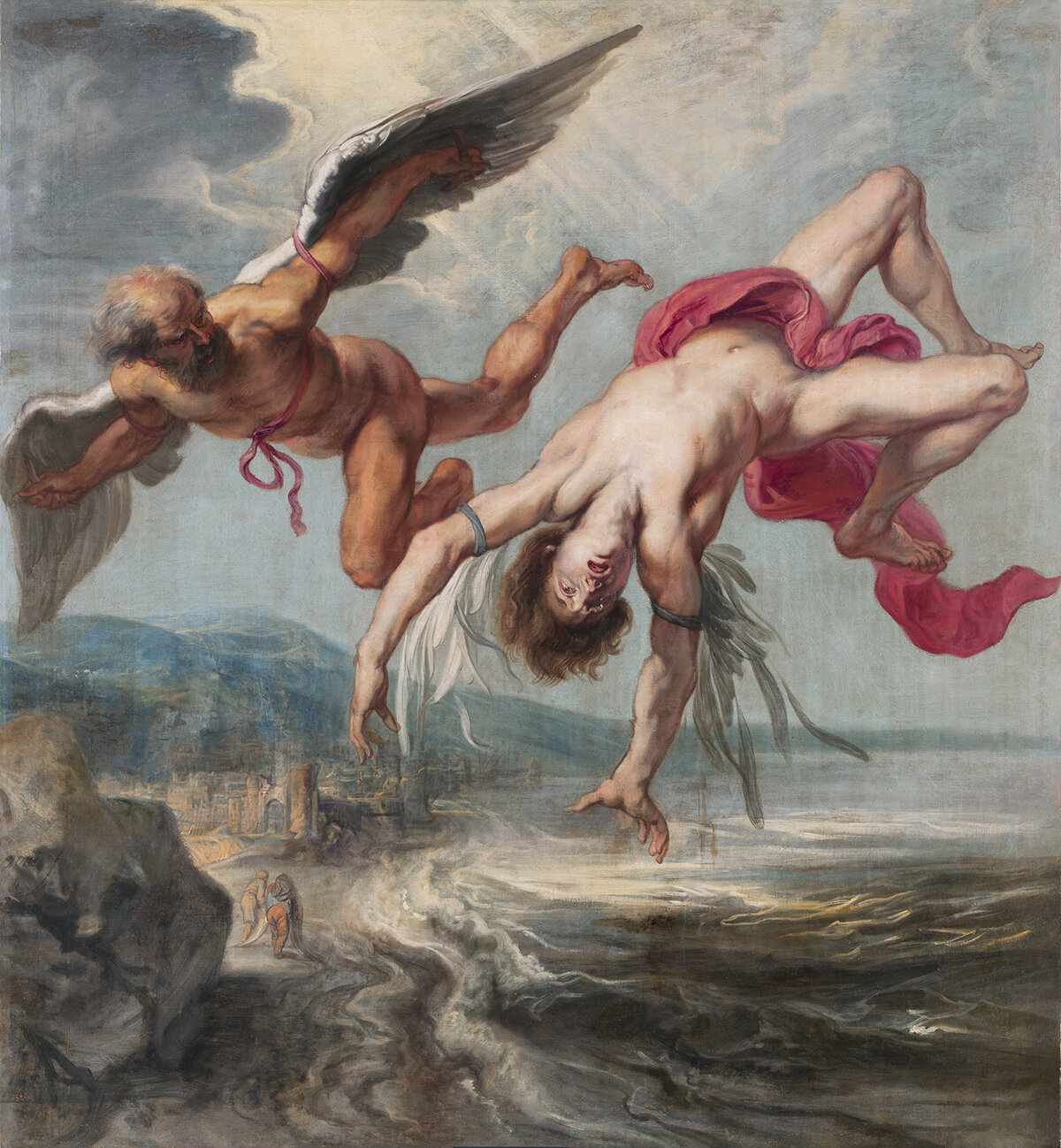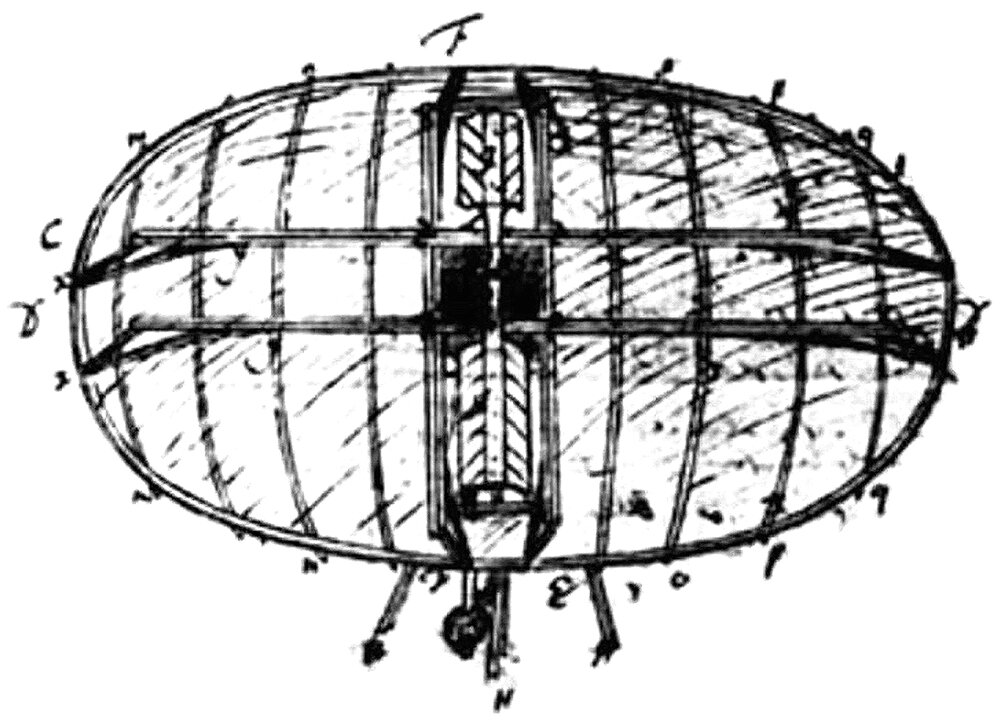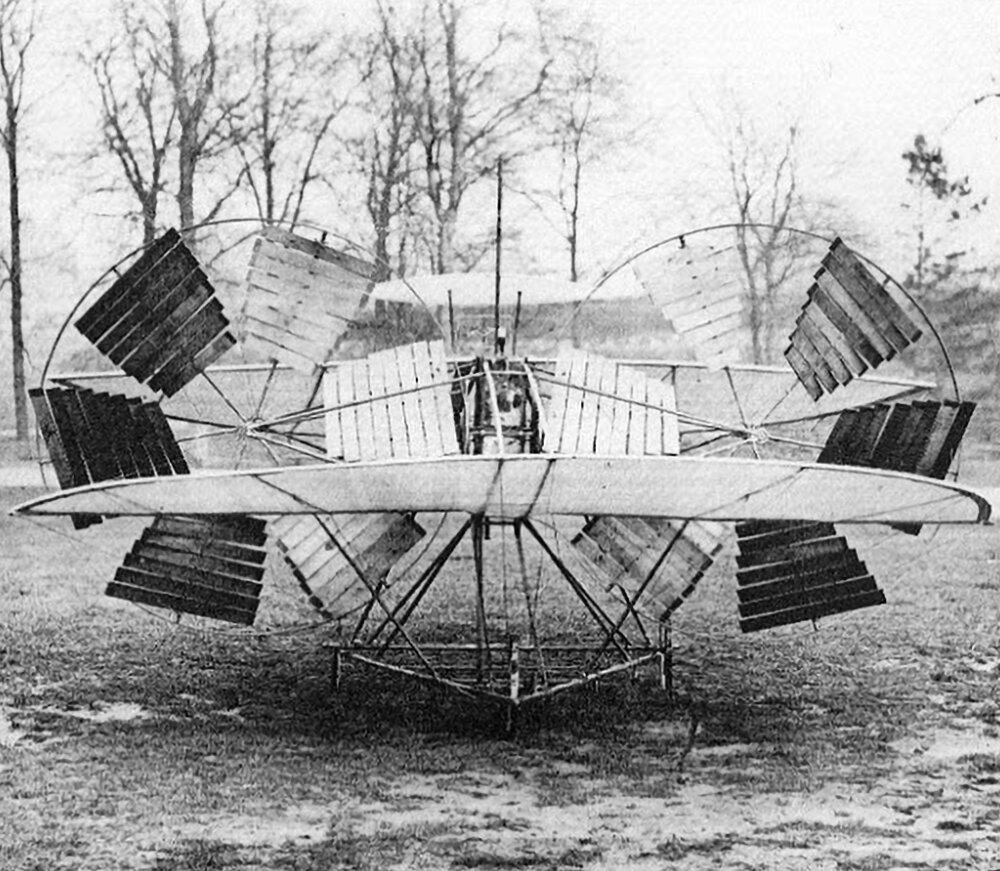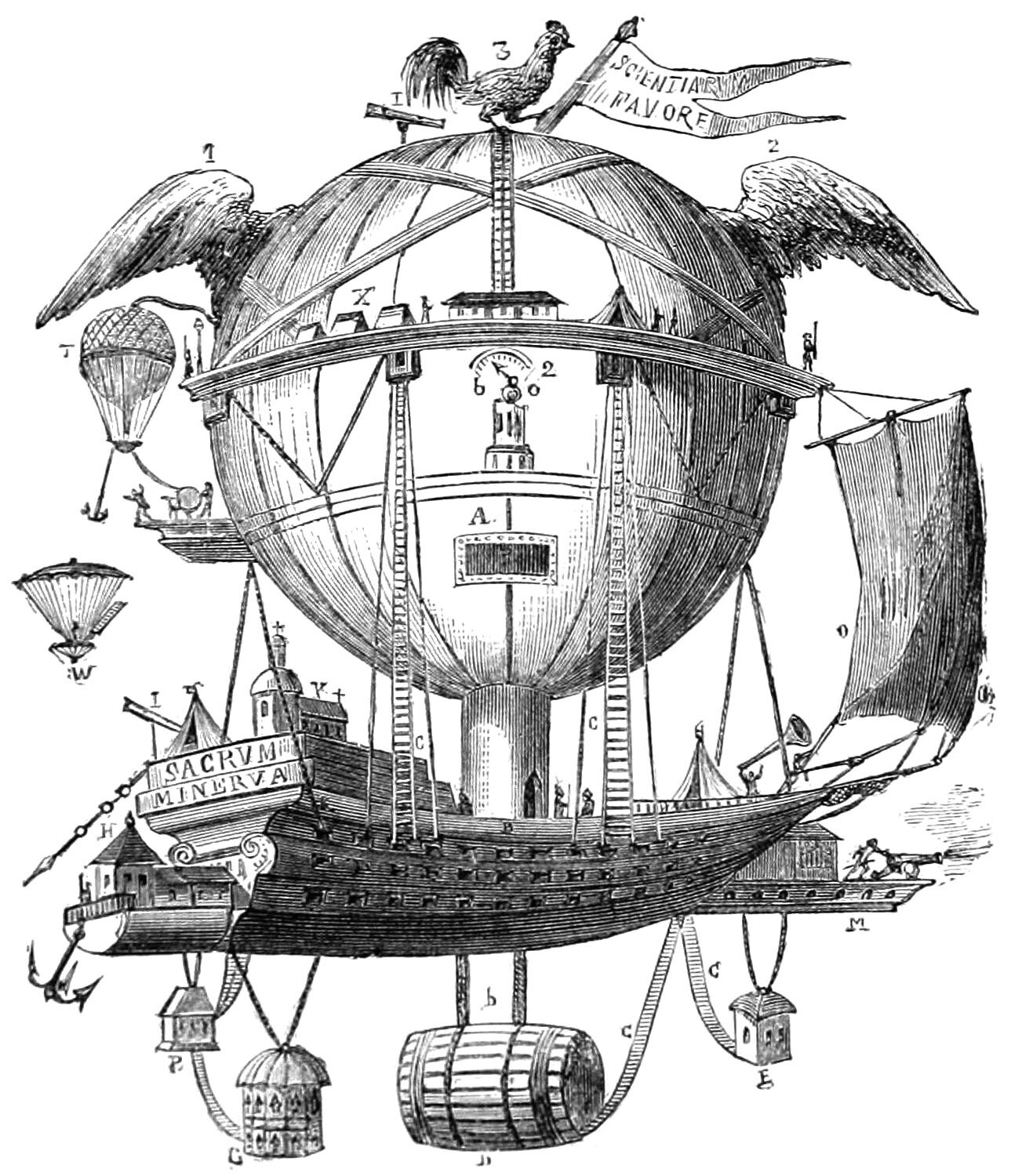Welcome to On Verticality. This blog explores the innate human need to escape the surface of the earth, and our struggles to do so throughout history. If you’re new here, a good place to start is the Theory of Verticality section or the Introduction to Verticality. If you want to receive updates on what’s new with the blog, you can use the Subscribe page to sign up. Thanks for visiting!
Click to filter posts by the three main subjects for the blog : Architecture, Flight and Mountains.
Tito Livio Burattini’s Flying Dragon
The above sketch is by Italian engineer Tito Livio Burattini, drawn sometime between 1647 and 1648. At first glance, it’s hard to reconcile a sketch of a flying dragon with a serious proposal for human flight, but Burattini had spent quite a bit of time researching flight, and the sketch was part of a larger treatise on the subject. It was titled Ars Volanti, and throughout the text Burattini wrestled with the idea of flight and how it may be achieved.
“It is impossible that men should be able to fly craftily by their own strength.”
-Giovanni Alfonso Borelli, Italian physiologist and mathematician, 1608-1679.
Pierre Ferrand’s Corkscrew Airship
This is Pierre Ferrand de Montfermeil’s 1835 design for an airship, featuring a giant screw mechanism and an elaborate system of fins. Unfortunately details of the design are scarce, and this appears to be the only image we have. According to the authors of the book L’Aéronautique des origines à 1922, it originallt appeared in a brochure titled Projet pour le Direction de l'Aérostat par les Oppositions Utilisées, or Project for the Direction of Airships used by Oppositions.
“A greater fear I do not think there was ... when I perceived myself on all sides in the air, and saw extinguished the sight of everything but the monster.”
-From The Divine Comedy, by Dante Alighieri, Italian poet and philosopher, 1265-1321.
The Unpretentious Philosopher
Check out the above illustration. It’s the frontispiece to Louis Guillaume de La Follie’s science-fiction work La philosophe sans Pretention, or The Unpretentious Philosopher, from 1775. What’s most interesting about it is the flying machine featured in the drawing, evidenced by the crowd of onlookers in awe of it.
“Mechanical wings allow us to fly, but it is with our minds that we make the sky ours.”
-William Langewiesche, American journalist and aviator, born 1955.
Tableau d’Aviation
The creativity and ingenuity on display throughout the history of flying machines is amazing. A quick survey of the table above shows the wide variety of ideas tried out before we humans successfully learned how to fly. One thing I love about this table is that it includes fictional flying machines as well as real prototypes. This shows that fictional designs can and have influenced the history of flight just as real prototypes have.
The Tale of the Ebony Horse
Pictured above is an illustration from The Tale of the Ebony Horse, which is a folk tale featured in the Arabian Nights. It tells the story of a mechanical horse that has the ability to fly. Throughout the tale, the horse bestows great power on those who know how to operate it, and it illustrates the power of verticality for the rest of us who cannot fly.
The Human Body and Flight : Why We Can’t Fly
The ability to fly is something that’s been on the human mind since time immemorial. We see birds and other creatures flying through the air, and we seek to fly as they do. We dream about it, and we’ve thought up myriad examples of human-like characters throughout our legends and myths who can fly. For all our hoping, however, it’s impossible for us to fly under our own strength. Let’s take a closer look at why this is true.
The Myth of Wayland the Smith
Throughout the history of myths and legends, there are myriad stories that are shared or borrowed from earlier sources, then re-named and adjusted for a different culture. Certain themes repeat themselves throughout the ancient world, and those that resonate most effectively will endure over time and evolve alongside the cultures they exist in. The myth of Wayland the Smith is one of these.
King Bladud and the Myth of the Flying Man
Legends have a way of expanding through time. They exist in the collective consciousness of the people who believe them, and the ones that endure usually grow and evolve alongside the cultures and civilizations they exist in. Take the myth of King Bladud, for example. Over time his story has expanded and endured. This is because he made an attempt to fly.
Jean Jacques Bourcart’s Ornithopter
Pictured above is a series of studies for a flying machine, proposed in 1866 by Jean Jacques Bourcart. Titled Vélocipède Aérien, the drawings show variations on an ornithopter design, in which a human pilot flaps the wings of the craft in order to fly. The subtitle of the illustration reveals that these are studies, tests and inventions which, without solving the problem of aviation, have nevertheless given interesting and encouraging results to the author.
L’Homme Volant
Pictured above is the cover of Le Petit Parisien from 9 September 1894. It shows German aviation pioneer Otto Lilienthal dangling from a building cornice, with a crowd of onlookers below. According to the paper, the illustration was drawn from a photograph which was taken a few days earlier in Frankfurt, Germany.
Louis Charles Letur’s Parachute-Glider
Pictured above is an 1853 design for a flying machine by German engineer Louis Charles Letur. His design consisted of a pilot’s basket flanked by two triangular wings, along with a vertical tail behind (not pictured in the above illustration). This assembly would hang under a large umbrella-like parachute, and it was meant to be lifted to a height by some other means, such as a balloon, then it would glide safely back down to earth.
Earth, Air, Water and Fire : The Verticality of The Classical Elements
Throughout human history, our ancestors have created myriad different theories and ideas to explain our world and how it’s composed. One theory was common to nearly all early civilizations, and it identified four basic elements: earth, air, water and fire. If we examine these four elements and pick apart the relationships between them, we’ll find verticality at the center of it all.
Daedalus and Icarus : A Parable of Human Flight
The oldest and most storied myth of human flight is the Greek myth of Daedalus and Icarus. Any history of flight, if tracked back far enough, will find it’s inception rooted in this timeless tale of youthful hubris. Over the centuries, the name Icarus has become synonymous with over-ambition, and has inspired countless other stories relating to human flight.
Nicolas Edme Rétif’s Flying Man
The above illustration is from Nocolas Edme Rétif’s 1781 novel La Découverte Australe par un Homme-Volant, or The Discovery of the Austral Continent by a Flying Man. The fictional bird suit pictured was built by Victorin, the main character of the novel. He was in love with the daughter of a local lord, and he built a flying suit in order to kidnap her and fly her to the summit of a local mountain, where no people could reach.
Emanuel Swedenborg’s Glider Sketch
The earliest examples of flying machines are from one of two sources. The first are fictional sources, such as myths or epics, and the second are exploratory sketches from great thinkers of their time, such as Leonardo da Vinci. The sketch above is an example of the latter, and it was sketched in 1714 by Emanuel Swedenborg, a Swedish polymath known for his theological works. The design is a combination of a glider and an ornithopter, and he sketched it in one of his notebooks with full knowledge that it could never fly.
Thomas Moy’s Aerial Steamer
Pictured above is Thomas Moy’s 1875 design for a flying machine, called the Aerial Steamer. It’s an unmanned tandem wing aircraft, with two pairs of wings: one pair at the front and one pair at the rear. Between the two pairs of wings were two massive propellers, which were made of wooden slats in a helix-like pattern that was designed to provide upward and forward lift simultaneously.
Étienne Gaspard Robert’s La Minerve Airship
Pictured above is an airship design from 1803 by Étienne Gaspard Robert. Robert was a Belgian stage magician and physicist, and he also designed and flew balloons. His most famous design, called La Minerve, is pictured above. It was meant to be an exploratory vessel which would make multi-month trips around the world. Robert described the craft as an aerial vessel destined for discoveries, and proposed to all the Academies of Europe. It’s impractical, naïve, and amazing.




